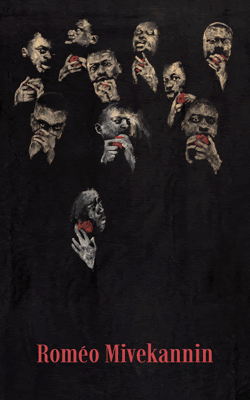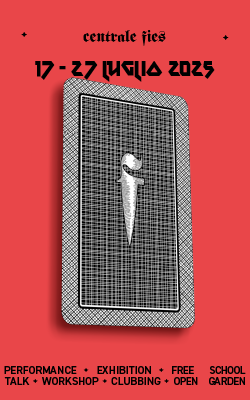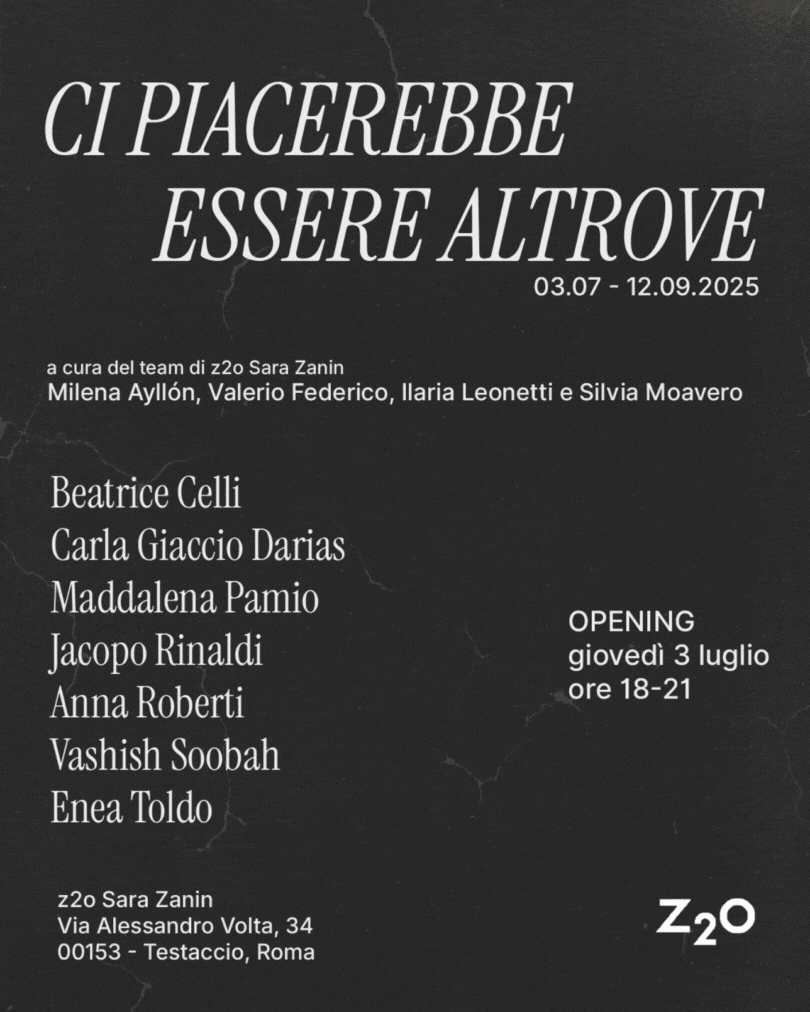[nemus_slider id=”71550″]
—
English text below
Una mostra ‘rivelazione’ quella ospitata fino a 26 gennaio 2018 alla T293 di Roma. La galleria presenta Look at me! dei Luisa Mè: due giovani artisti alla loro prima esperienza pubblica. Proposti con una ricerca dall’ ‘energia prorompente’, i Luisa Mè lavorano con la pittura e la scultura, due mezzi espressivi che con audacia, piegano e ‘digeriscono’ con un loro stile molto originale. Richiami, echi e consonanze si rincorrono in tutte le opere esposte, animate da un milieu allucinato e ibrido, caratterizzato da colori saturi e vividi.
In occasione di questa loro prima mostra, li abbiamo intervistati.
ATP: Una domanda che forse vi hanno già chiesto molte volte: perché vi chiamate Luisa Mè?
Luisa Mè: Luisa Mè è un nome composto da tre parole, LUI-SA-ME (SA, in dialetto Pesarese/Fanese significa “con”). Attraverso l’unione di questi tre vocaboli nasce “Lui-sa-Mè” ovvero “Lui con me”.
ATP: In merito alla mostra che presentate alla T293 di Roma, “Look at me!”: il titolo suona come un imperativo, un ordine. Mi sbaglio? Perché lo avete scelto?
LM: La mostra alla T293 è ufficialmente la nostra prima mostra, di conseguenza abbiamo pensato che non poteva esserci titolo migliore di “Look at Me!” come a voler dire: “Hey voi guardateci!”
ATP: Presentate una serie di opere pittoriche e sculture. In riferimento ai quadri, sono tutti animati da presenze che ritornano, ossessive: figure filiforme dalle espressioni angosciate e angoscianti. I corpi sono deformati da azioni acrobatiche e rocambolesche. Dove avete mutuato questo immaginario?
LM: Il processo confuso e manesco nei confronti del lavoro, in cui il quadro viene sporcato per mezzo di spostamenti, cambi di orientamento della tela, aggiunta e rimozione di colore fa si che la superficie del dipinto si arricchisca di cicatrici testimoniando la lotta alla base della creazione. All’interno di questo contesto caotico le figure perdono una chiara identità sessuale, i personaggi indossano tacchi a spillo ma quasi mai dichiarano fattezze femminili, la condizione psicologica ed il disagio diventano i principali protagonisti.

ATP: I lunghi becchi e i tacchi a spillo che connotato le figure nei quadri, ritornano anche nelle sculture: esili presenze che sembrano assalite da una malattia all’epidermide. In merito alla ricerca plastica di queste sculture, mi raccontate come sono nate e la ragione dei loro titoli: Unworried, Quiet, Warm ecc.?
LM: I titoli che apparentemente contraddicono l’atteggiamento delle sculture, nascono in reazione ad una domanda che ci siamo posti in passato: “la comodità può essere dannosa?”. Abbiamo scritto una lista di aggettivi riferiti al comfort e alla tranquillità pensati per delle sculture che assumessero posizioni scomode e di sottomissione. Se ci fosse un letto a testa in studio probabilmente ci passeremmo tutto il giorno; per “agire” è necessario spostarsi da una condizione di comodità statica ed assumere un atteggiamento critico verso ciò che ci fa stare bene.
ATP: La pittura che proponete è molto stratifica: a pennellate liquide, grovigli di segni a matita, ghirigori e tratteggi, masse scure e dense accanto a campiture più diluite. Ci sono dei pitturi o dei generi pittorici che guardate in particolare?
LM: Il Battesimo di Cristo di Piero della Francesca alla National Gallery di Londra è sicuramente una bella boccata d’aria fresca! Il coinvolgimento psicologico e pittorico che c’interessa invece si avvicina molto al cinema di Michelangelo Antonioni e di Federico Fellini.
ATP: A livello iconografico, nella presentazione della mostra si palesa il richiamo a dei maestri della storia dell’arte come Mantegna e Bellini. Mi raccontate come elaborate questi riferimenti legati alla tradizione pittorica italiana?
LM: La tradizione pittorica italiana fa parte della nostra eredità culturale ed inevitabilmente influenza l’approccio formale ed il rapporto che il lavoro instaura con lo spettatore. I grandi maestri del passato hanno spesso realizzato figure fortemente iconiche, robuste ma allo stesso tempo innocenti. L’ultimo aspetto è uno di quelli che più ci affascina, indipendentemente dal contesto in cui rappresentiamo le figure, esse risultano cariche di innocenza.

Luisa Mè — Look at me!
Until 26 January 2018
T293, Rome
In addition to being a bold and almost arrogant call for attention, Look at me! is an invitation to go beyond an immediate and instinctive participation that Luisa Mè – a duo of young Italian artists who present their work to the public for the first time – address to the observer.
An overwhelming energy transforms apparently peaceful situations into virtual struggles that force the figures into unnatural and painful contortions. The characters writhe to such an extent that they look like they are literally trying to escape from the canvas, strenuously pushing their legs and feet onto the boundaries of the frame. At the same time, this perimeter becomes a solid support for the activation of those violent and necessary actions within the composition. In contradiction to the immobility that should characterize their nature, the curvaceous sculptures in resin and clay also appear to be animated by a desire for rebellion which is evident in the visual downward pressure towards the floor that nearly precedes their escape.
The constant search for consolation and the desire to find shelter behind areassuring beauty provoke an illness that unexpectedly appears as sharp beaks on the face of the characters, transforming them into semi-human figures with a surprisingly iconic intensity. Anthropomorphic characters decorated with long colored feathers, such as in ‘Orano’ and ‘Per via del sole’, appear like divinities from a primitive religion captured in the act of practicing a ritual.
At the same time, their features are similar to those of the apostles or martyrs, thus generating iconic images that can be traced back to Christianity and recall the dormant figures of the masterpieces of Mantegna and Bellini. This tribute to the masters of the history of Italian sacred art, also evident in the lively color range distributed throughout the scene, becomes an opportunity to borrow that visual power from religious iconography that is fundamental to engage emotionally the observer in this torment of innocent figures.
The anxiety pervading the situations depicted in the artworks is heightened by the representation of the moshpit, that area under the stage of hard rock or heavy metal concerts where the most agitated fans dance and push with an intensity verging on violence. In the paintings of Luisa Mè, the moshpit turns serene images, such as a beach or a serenade, into violent actions unveiling the dark side that lies behind the pleasant and the comforting. In the case of ‘Look at me! (Sunset), for example, the contortion of the bodies and the group thrashing at sunset lead to a veritable martyrdom, alluding to the scenes of brutality that we witness very often and to which we are sadly accostumed.











